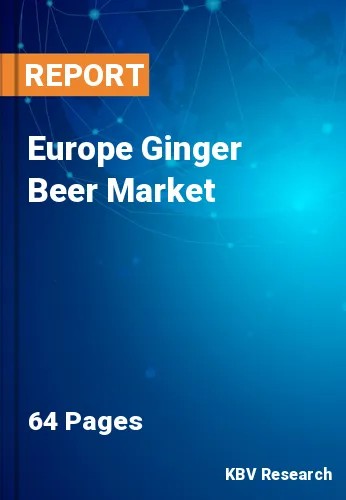The Europe Ginger Beer Market would witness market growth of 6.6% CAGR during the forecast period (2022-2028).
Mashes of grains, fruits, or other components are the initial step in the distillation process. The resulting fermented liquid is then heated until the alcohol and flavorings evaporate, at which point it may be taken off, chilled, and condensed back into a liquid. The remaining water is dumped. Distilled beverages consist of liquors such as whiskey, gin, vodka, rum, brandy, and liqueurs or cordials. Typically, their alcohol content is from 40 to 50 percent, but greater or lower percentages exist.
Due to the absence of digestive enzymes, alcohol is rapidly absorbed in the gastrointestinal system (stomach and intestines) upon consumption of an alcoholic beverage; hence, alcohol levels in the blood rise swiftly. From the blood, alcohol is transmitted to all regions of the body, where it exerts a depressive impact on the brain. Under the influence of alcohol, the brain's processes degrade predictably.
The most complicated functions of the brain are judgment, self-criticism, and taught inhibitions from early childhood are depressed first, resulting in a sensation of exhilaration during the early phases. For this reason, alcohol is often mistakenly considered a stimulant. Under the effect of increasing amounts of alcohol, the drinker progressively becomes less vigilant, his awareness of his surroundings gets dull and fuzzy, his muscle coordination deteriorates.
The majority of persons in Germany who participated in the study drank alcohol at some point in their lives, and around one-fifth of them drank to dangerous levels. Higher alcohol consumption scores were linked with younger age, being male, smoking at the time of the survey, having a high socioeconomic position, anxiety, and not residing in South West Germany, whereas lower alcohol consumption scores were connected with depression. These populations could gain from alcohol reduction programs and support that are specifically tailored to them which accelerate the growth of the ginger beer market.
The Germany market dominated the Europe Ginger Beer Market by Country in 2021; thereby, achieving a market value of $487.2 million by 2028. The UK market is exhibiting a CAGR of 5.8% during (2022 - 2028). Additionally, The France market would experience a CAGR of 7.4% during (2022 - 2028).
Based on Type, the market is segmented into Non-alcoholic and Alcoholic. Based on Flavor, the market is segmented into Flavored and Original. Based on Distribution Channel, the market is segmented into On-trade and Off-trade. Based on countries, the market is segmented into Germany, UK, France, Russia, Spain, Italy, and Rest of Europe.
Free Valuable Insights: The Global Ginger Beer Market will Hit $6.7 Billion by 2028, at a CAGR of 6.9%
The market research report covers the analysis of key stake holders of the market. Key companies profiled in the report include Fever-Tree Drinks PLC, Fentimans Ltd., Crabbie’s Alcoholic Ginger Beer (Halewood Artisanal Spirits (UK) Limited), Bundaberg Brewed Drinks Pty Ltd., Rachel's Ginger Beer, Gunsberg, Natrona Bottling Company, Goslings Export (Bermuda) Limited and Q Tonic, LLC
By Type
By Flavor
By Distribution Channel
By Country
Our team of dedicated experts can provide you with attractive expansion opportunities for your business.

